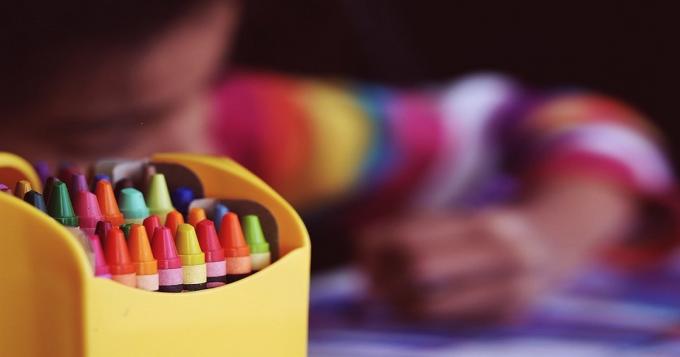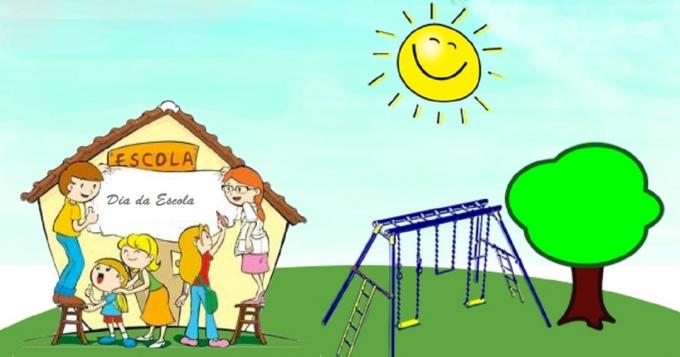
Check out some suggestions for your School Day Project – March 15th.
March, 15, this is the day that is celebrated annually in Brazil. SCHOOL DAY. This date celebrates one of the most important institutions for the educational formation of the population: the school. School day, different from what many people think, is not considered a national holiday.
It is at school that the individual learns and puts into practice several essential concepts to maintain a life in society. In addition, it is also at school that people begin to develop a critical sense, which is important for building a politicized and less alienated community.
See too:
Index

School Day Project – My school and my little friends
Because these are the younger age groups, those with the most difficulty in adapting, a lot of work is needed, which makes the child realize the real meaning of being in school, mainly in the aspects of: making new friendships (socialization) and discovering the different spaces of the school area, experiencing in them games and construction of knowledge.
GOALS:
We already know:
We want to know:
RESOURCES:
1- Tell the story of Pinocchio, highlighting the importance of the school. Talk about it, making comparisons between them (children) and the doll.
2- Make the presentation (each child speaks their name, including the teacher) noting if there are the same names.
3- Play a game to help children identify friends, especially new ones.
4- Take a tour of the school, getting to know its spaces, the professionals who work there and their respective functions.
5- Make a list of the things you have at school.
6- Search a magazine for photos and pictures that remind you of the things you have at school. Ask them to cut it out, and glue it on bond sheets and then put together a booklet “There is it at school”.
7- Talking about why you are at school, the importance of school and the main element of the school “the child”. Make comparisons of “Pinocchio”, the puppet, with a real boy (which he later turns into).
8- Talk about what we can and cannot do at school. Establishing rules.
“They can” do it at school: draw, play, eat, bathe and sleep (if they stay all day), see books, dance, sing, write, paint and model.
“They can't” do at school: fight, throw sand on the sidewalk, scream in the classrooms, courtyard and hallway, dirty the school, breaking toys, running around in rooms, patios and hallways, leaving the room without permission and throwing toys and Water.
9 – Draw a child's drawing, using one of them to outline their body. Then add details such as: hair, eyes, ears, mouth etc. Working the body scheme.
10 – Draw the body scheme.
11- Tell a story that shows the importance and usefulness of our body parts (hands, eyes, mouth, etc.).
12- Explore the various aspects of the story.
13 – Draw one or more parts of the body, worked with the story.
See more: School Day Activities
I realized that after this project the children are more attentive and participative. The group is interested, capricious and managed to carry out all the proposed activities. They recognize most of the concepts worked on, are more communicative and some who at first refused to participate in the activities, today show interest and enthusiasm.

School Day Project – Me and my school
Because they belong to the first stage of elementary school, children in kindergarten may have greater difficulty in adaptation, so a whole lot of work is needed to make the child realize the real meaning of being at school, especially in the aspects of: making new friends (socialization) and discovering the different spaces in the school area, experiencing games and construction in them of knowledge.
In addition, at this first moment, it is important that the child gets to know their peers and themselves, that the educator know the potential and needs of each child and that the family feels safe with the institution of teaching. Thus, this project wants to promote the interaction between school/family, educator/student and student/student, in order to stimulate the development of feelings such as affection, love and respect for others both at home and at school.
Considering the adaptation period that takes place at school and that both the children, the school and the family are getting to know each other, this theme will be developed in order to try to identify and overcome the challenges, working on the child's affectivity and importance. of this feeling in family and school life, seeking in the interaction between both parties, a formation of children as beings citizens.
Provide children with greater knowledge about the school environment, respecting institutional rules and routines, as well as the individuality of each one within the school community.
The purpose of this project is to help each student develop creativity and expression of affection and respect, in addition to learning to share.
Excellent suggestion for working motor coordination.

School Day Project for Maternal
- Hopscotch
– Butter Bar
– Pass Ring
- In and out
– Five Marys
– Tug of War
– Choose the Hand
– Mom, can I go?
- Wireless phone
– I went to the fair
– Jump Saddle
– Little flag
– Adoletá
– Ball Race
– Animal Race
– Ball War
- Jump rope
– Little Colorful Elephant
– Tin foot
– Squat-squat
- Hot potato
- If I were you
- Surprise box
– Label Game
– Pass Ball
– Four Colors
– Undead
- Chair dance
– Someone very special
– Surprise Target
- Blind goat
– Run Cotia
- Hide and seek
– The Leap of Arrival
– Tag
- Hot and cold
– shuttlecock
– Bladder game
– Mouth of Oven- From Havana came a boat – Potato Chips- Chicotinho Queimado- Statue- Good boatman or you will pass
- Burned
– What animal am I?
- Mimicry
– Hit the can

School Day Project
For the directions suggested here, illustrations were created in order to discuss some of the activities that could be developed.
The school that sets free – Illustration 1
Illustration 1 - This illustration intends to emphasize the school as a social institution that trains critical citizens, preparing them not to only for the job market and universities, but above all for life and personal, professional and Social. From the image we can work on some questions:
What elements can we identify in the image? (e.g. students, teachers, school,
books, reading, materials…)
(directed discussion according to the students' referrals and reflections…)
This illustration may support an initial discussion about the importance of school in our lives, the role it plays and the possibilities it offers.
Illustration 2 – The school as a public institution, historical heritage, belonging to the community.
Illustration 3 – The school as a public good. It refers to the care we must have with the school.
Illustration 2 and 3
The two illustrations make it possible to discuss, rescue and socialize the school as a socio-historical heritage, as well as valuing the community and its relationship with the school. The activities may involve one or more subjects and other segments of the school, focusing on the appreciation of the historical constitution of the school as part of the community and the history of families. From the illustrations, the following questions can be worked:
These questions may unfold different activities – research, production, artistic, etc.
1 – Propose students to interview their parents and family members. The objective is to identify whether these people know the history of the school, the important facts that happened there, or from it, the achievements, the professionals and their dependencies (this can be a good time to talk to students about who the school's professionals are – principals, teachers, etc. -, and functions they perform).
2 – Elaboration of a reinterpretation of the image, representing your school through illustration (drawing) produced using GIMP software or another image editor; or even the production of a text, newspaper, poetry or music. Schools can use their website or the NRE website to publicize their work.
Source: http://www.educadores.diaadia.pr.gov.br
Subscribe to our email list and receive interesting information and updates in your email inbox
Thanks for signing up.


